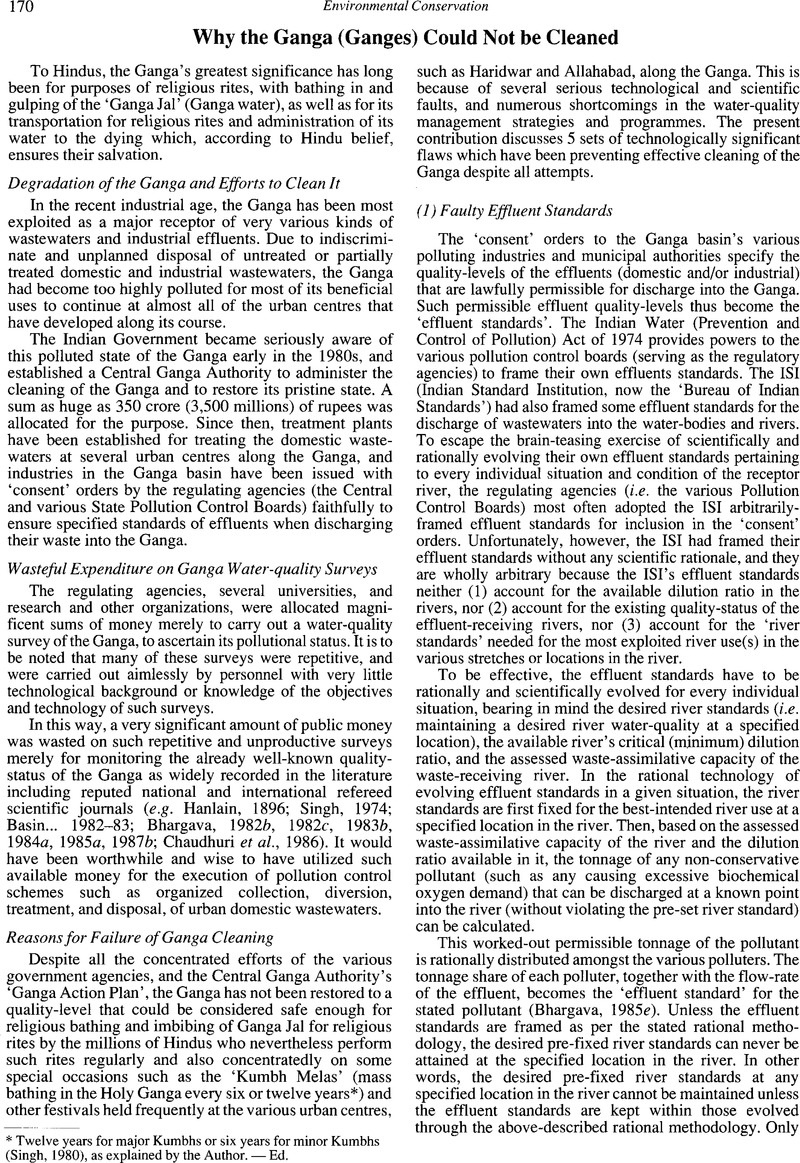Crossref Citations
This article has been cited by the following publications. This list is generated based on data provided by Crossref.
Bhargava, Devendra Swaroop
1994.
Dal Lake Clean-up Strategy: An Example for Others?.
Environmental Conservation,
Vol. 21,
Issue. 3,
p.
269.
Bhargava, Devendra S.
2006.
Revival of Mathura's ailing Yamuna river.
The Environmentalist,
Vol. 26,
Issue. 2,
p.
111.
Singh, Munendra
and
Singh, Amit K.
2007.
Bibliography of Environmental Studies in Natural Characteristics and Anthropogenic Influences on the Ganga River.
Environmental Monitoring and Assessment,
Vol. 129,
Issue. 1-3,
p.
421.
Bhargava, Devendra Swaroop
and
Bhargava, Devendra Swaroop
2014.
Our National River Ganga.
p.
171.
Kedzior, Sya Buryn
2017.
“Preemptive Participation” and Environmental Awareness Across Indian Water Quality Policy.
The Journal of Environment & Development,
Vol. 26,
Issue. 3,
p.
272.
Munawar, M.
Fitzpatrick, M.
and
Munawar, I.F.
2022.
Application of the Laurentian Great Lakes ‘Ecosystem Approach’ towards remediation and restoration of the mighty River Ganges, India.
Aquatic Ecosystem Health & Management,
Vol. 25,
Issue. 2,
p.
1.



